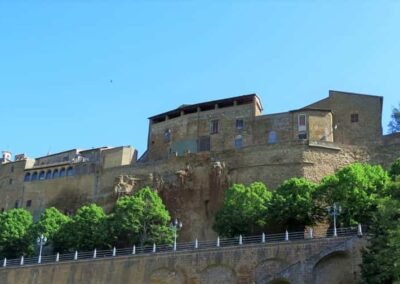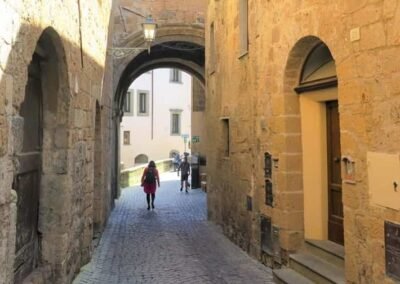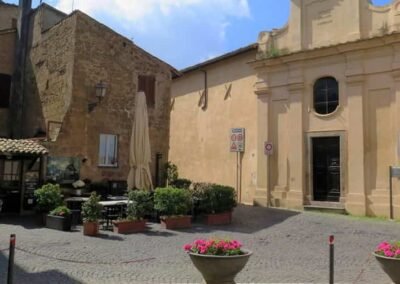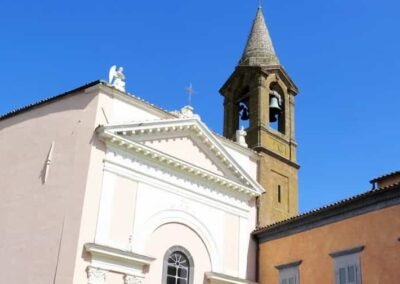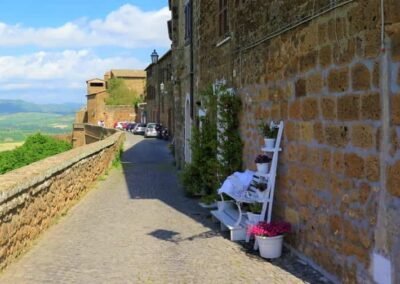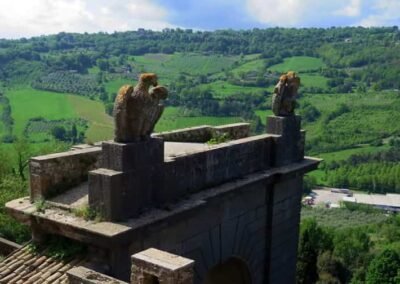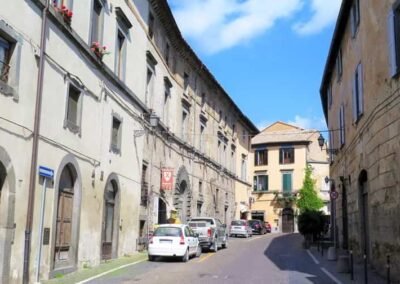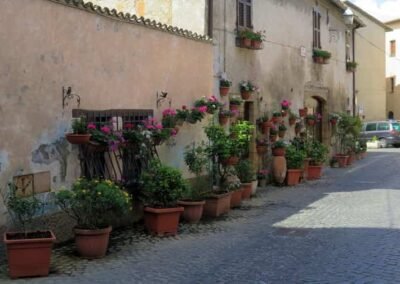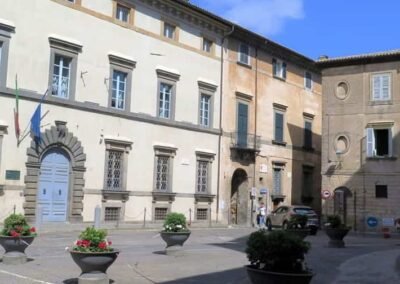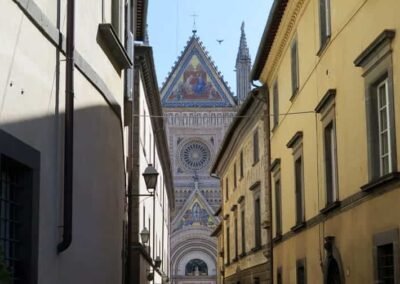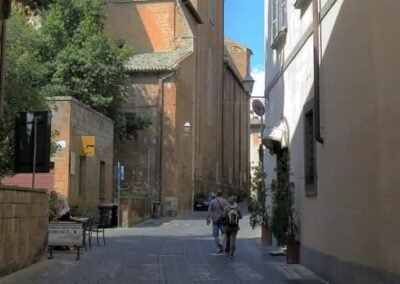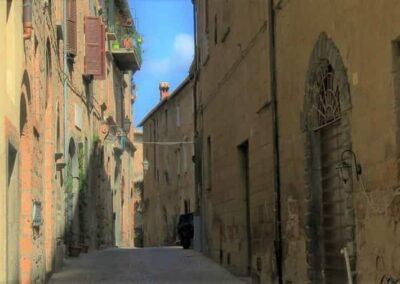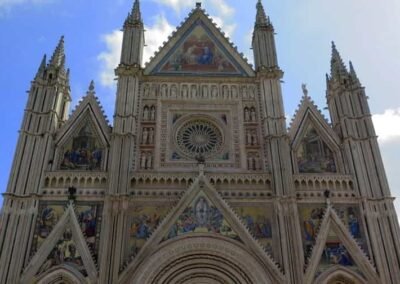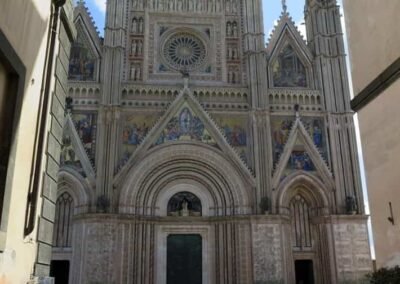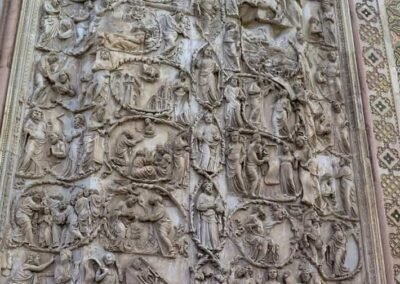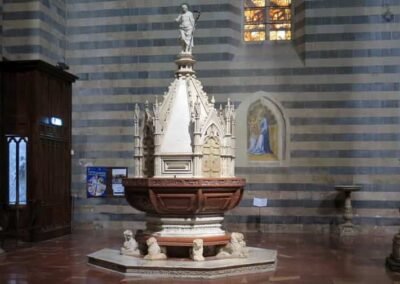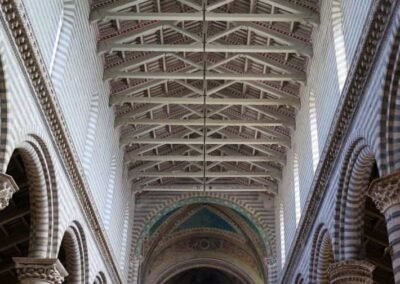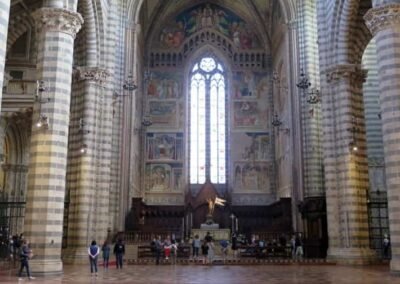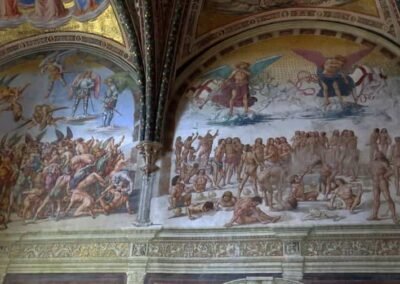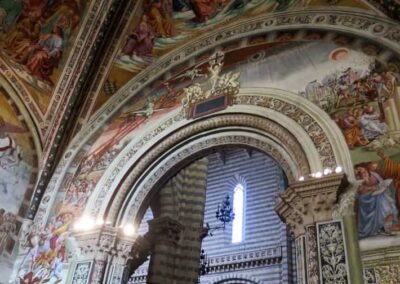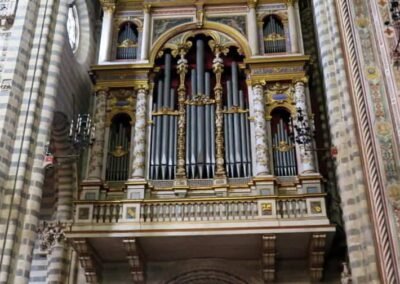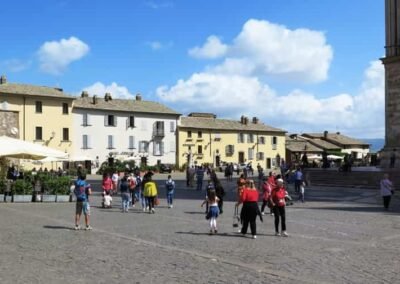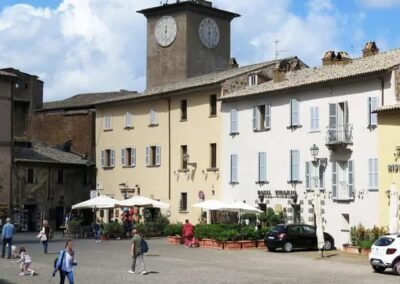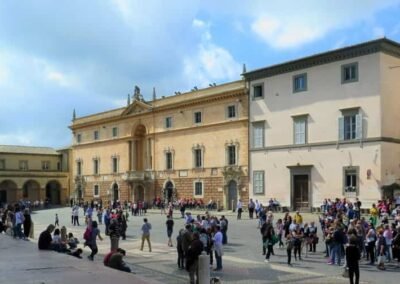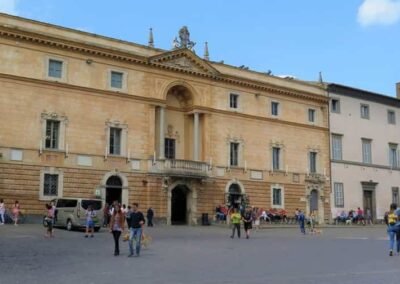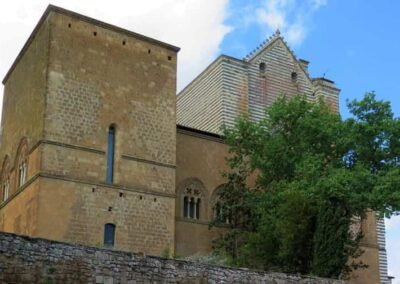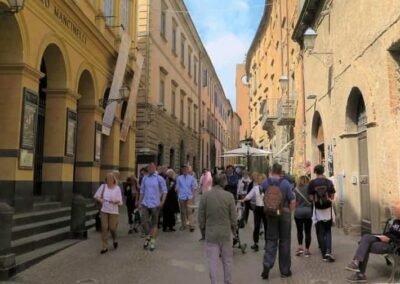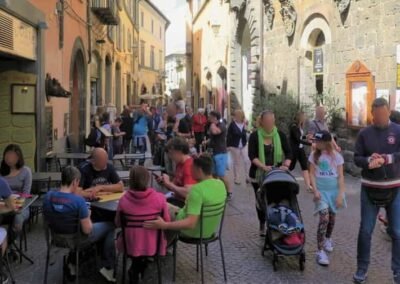HOME
THE REGIONS OF ITALY
PLACES IN ITALY
Italy in Photos
Piazza de’ Ranieri, 05018 Orvieto, Italy (April 2018)
Orvieto
Orvieto, a captivating hilltop City in the Umbria region of central Italy, is renowned for its stunning medieval architecture, rich history, and vibrant cultural scene. Perched dramatically atop a volcanic tuff cliff, Orvieto offers breath-taking views of the surrounding countryside and stands as a testament to the ingenuity of its ancient inhabitants. With its origins dating back to the Etruscans, Orvieto is a treasure trove of historical and artistic wonders, making it a must-visit destination for those exploring the heart of Italy. Orvieto’s history is as deep as the cliffs on which it stands. The cities origins can be traced back to the Etruscans, who founded it around the 8th century BCE. Known as “Velzna” in Etruscan times, Orvieto was one of the most important cities in the Etruscan civilization, serving as a major religious and political centre. The remnants of this ancient past are still visible today, particularly in the underground labyrinth of tunnels and caves that were used for various purposes, including water storage, as cellars, and as places of refuge. During the Middle Ages, Orvieto flourished as a powerful city-state. Its strategic location made it a key player in the region’s politics, and it became a favoured retreat for popes seeking refuge from the turmoil in Rome. This papal connection has left a significant mark on the city, particularly in its architecture and religious institutions.
The most iconic landmark in Orvieto is undoubtedly its magnificent cathedral, the Duomo di Orvieto. This stunning Gothic cathedral, begun in 1290, is a masterpiece of medieval architecture and art. Its striking façade, adorned with intricate mosaics, sculptures, and a large rose window, is considered one of the greatest achievements of Italian Gothic architecture. Inside, the cathedral is equally impressive, with frescoes by Luca Signorelli and Fra Angelico that depict scenes of the Last Judgment, considered some of the finest examples of Renaissance art. Another architectural gem is the Palazzo del Popolo, a grand medieval palace that once served as the seat of the city’s government. Today, it hosts cultural events and exhibitions, continuing its role as a centre of civic life. The Torre del Moro, a tall clock tower in the heart of Orvieto, offers panoramic views of the town and the surrounding landscape, providing a perfect vantage point to appreciate the town’s unique setting. One of Orvieto’s most fascinating features is its underground world. Beneath the town lies a vast network of caves, tunnels, and cisterns, carved out of the soft volcanic rock over centuries. Known as Orvieto Sotterranea, this subterranean labyrinth was used by the Etruscans for various purposes, including as a refuge and for water management. Today, guided tours offer visitors the chance to explore these ancient passages and learn about the town’s ingenious use of its natural resources.
Orvieto is also known for its vibrant cultural life and its culinary traditions. The city hosts numerous festivals and events throughout the year, celebrating everything from medieval history to local food and wine. The Umbria Jazz Winter Festival, held every December, attracts music lovers from around the world, while the Palio dei Quartieri, a medieval re-enactment, brings the town’s history to life in a colourful display of pageantry and competition. The local cuisine is another highlight of Orvieto, with its roots in Umbrian culinary traditions. The city is famous for its white wine, Orvieto Classico, a crisp, refreshing wine that pairs perfectly with the region’s hearty dishes, such as wild boar, truffles, and handmade pasta. Orvieto is a city that seamlessly blends its rich history with vibrant modern life, offering visitors a unique experience that is both culturally enriching and visually stunning. Whether you’re exploring its magnificent cathedral, wandering through its medieval streets, or discovering its underground secrets, Orvieto provides a captivating glimpse into Italy’s past while embracing the present. This hilltop city, with its breath-taking views and timeless charm, is truly one of Italy’s hidden gems, inviting travellers to discover its many layers of history, art, and culture.
Worth a Visit
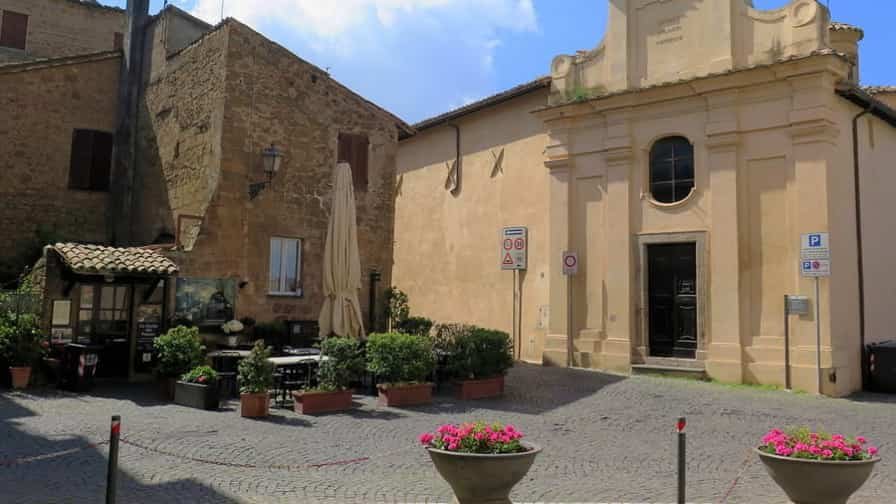
Piazza San Giovanni in Orvieto is a quietly charming square in the historic core of the city, cantered around the Church of San Giovanni Evangelista. The square occupies a spot rich with layered history, the church itself stands on what may have been earlier Roman or even Etruscan religious foundations. Adjacent to the church is the Palazzo del Gusto, whose subterranean levels house the Enoteca Regionale dell’Umbria, cellars carved into the volcanic tuff rock that hold centuries of winemaking tradition. Throughout the year Piazza San Giovanni hosts gastronomic events like Orvieto con Gusto and Orvieto Food Festival, making it not merely a place of worship or history, but also of community gathering and culinary celebration. Architecturally and atmospherically, the square is an evocative blend of spiritual significance, rustic Umbrian charm, and cultural vitality, a small but unforgettable hinge between Orvieto’s furrowed past and its lively present.
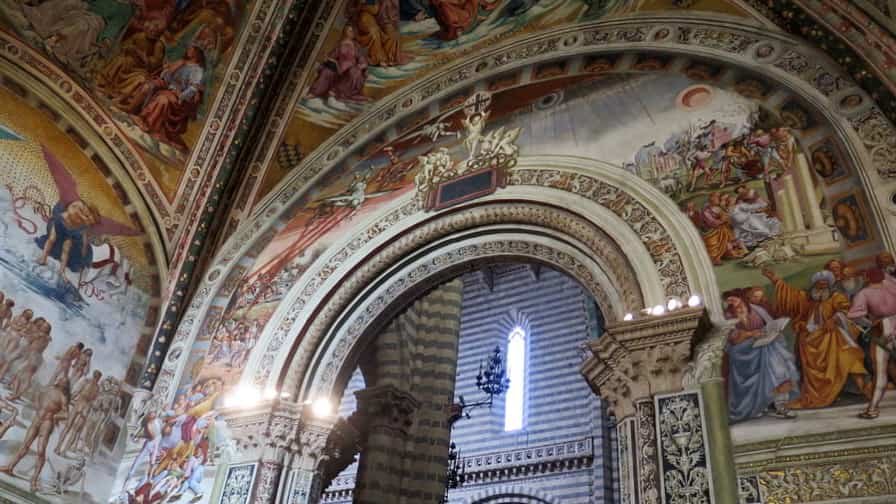
Corso Cavour is the bustling spine of Orvieto’s historic centre, linking Piazza Cahen in the west (near the funicular) and Piazza della Repubblica in the east. Flanked by tufa-stone buildings, elegant palazzi, cafés, boutiques, and restaurants, this gently sloping street offers visitors a scenic introduction to the city’s charm. Among its landmarks is Torre del Moro, a 47-metre tower with a clock and panoramic views that anchors the street at its intersection with Via del Duomo. Also significant is Palazzo Gualterio, a late Renaissance building with façades on Corso Cavour, designed initially by Sangallo and later decorated under Simone Mosca. Walking Corso Cavour is a pleasurable way to immerse yourself in Orvieto’s everyday life, sampling gelato or wine, admiring architecture, visiting shops, or simply enjoying views of the rolling Umbrian/Umbrian-Lazio countryside
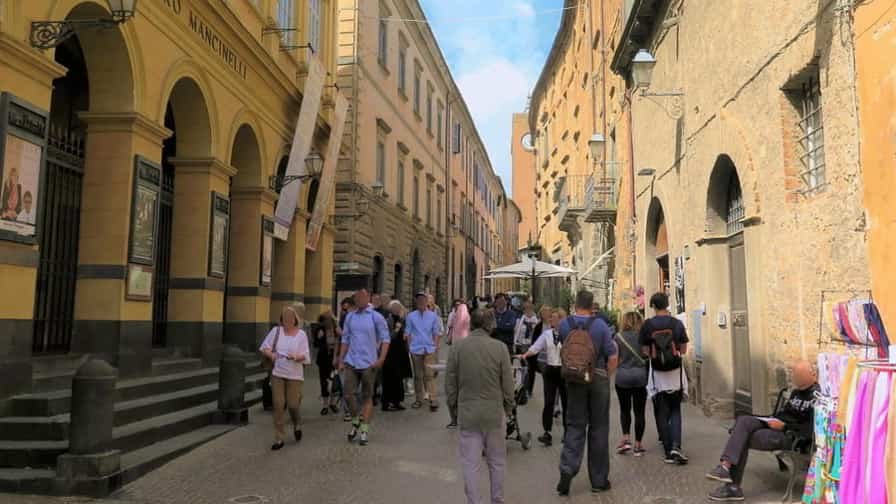
The Cattedrale di San Giuseppe, located in Piazza Lucio Valerio Pudente in the heart of Vasto, Italy, is the city’s main cathedral and a remarkable symbol of its spiritual and historical identity. Originally built in the 13th century on the remains of an earlier church, it has undergone several transformations that reveal a blend of Romanesque and Gothic influences, with later Baroque touches. The cathedral’s façade, with its elegant stonework and rose window, stands as a testament to centuries of devotion and craftsmanship. Inside, visitors find a harmonious blend of sacred art, ornate altars, and peaceful chapels, creating an atmosphere of reverence and reflection. As the seat of Vasto’s religious life, the cathedral hosts important ceremonies, festivals, and cultural events that connect the community to its traditions. The Cattedrale di San Giuseppe is not only a place of worship but also a living monument, embodying the enduring faith and heritage of Vasto.
Photo Gallery of Walk – Parcheggio Percorso Meccanizzato to Piazza Sant’Andrea
Approximately 2.27 km – 1.41 miles
The walk starts in Parcheggio Percorso Meccanizzato – take the lift or escalators to Piazza de’ Ranieri – Via Ripa Serancia – Vicolo Ripa Medici – Via Giuseppe Garibaldi – Via Alberici – Via Ghibellina – Via Ippolito Scalza – Piazza Febei – Via Lorenzo Maitani – Via Pedota – Via Lorenzo Maitani – Piazza del Duomo – Duomo di Orvieto, Piazza del Duomo – Via Soliana – Via Cesare Nebbia – Corso Cavour – Piazza Sant’Andrea
COPYRIGHT © 2018-2025 ITALY IN PHOTOS - ALL RIGHTS RESERVED
